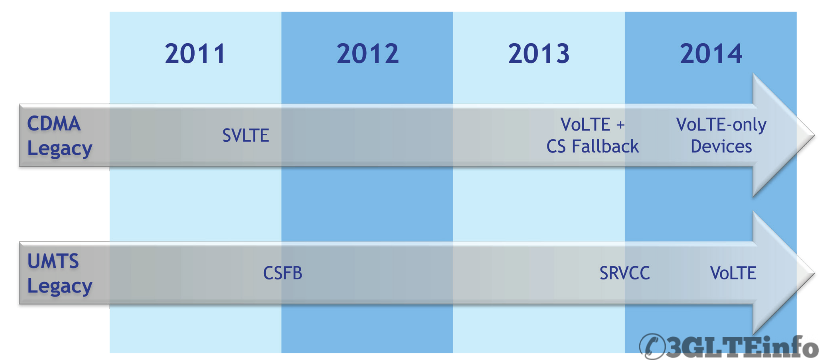Providing voice service on mobility was the initial goal of mobile technology. Voice was the killer applications for many years until data became the lead.
Today data traffic is the driving force behind many design changes in the mobile network.
3GPP offered LTE to support better data throughput. Unlike 3G/UMTS where mobile network supported both CS and PS domain, LTE only has packet PS core. EPC or Evolved Packet Core is the LTE PS only core network.
As LTE is an all-IP network, there is no support for CS domain. Despite the fact data traffic is the major factor in today’s mobile network, voice and SMS has a big role to play.
As we discussed in the earlier chapters, VoLTE offers voice and SMS services in LTE network. It uses IP Multimedia Subsystem,
Though VoLTE in the developed completely, operators are struggling to roll out VoLTE. The main challenge is to provide call continuity between LTE and legacy circuit-switched networks.
The deployment strategy for CDMA operators who adapted their LTE is different than operators who migrated their network from legacy 3GPP network to LTE.

Simultaneous Voice and LTE (SVLTE)
When LTE is used with a legacy 3GPP2 network, SVLTE uses two radios to simultaneously communicate with:
- 1X circuit switched services like voice call, SMS and emergency call
- LTE network to get better PS data throughput
SVLTE helps for rapid deployment of LTE with a 3GPP2 network. But, using two radio antenna not a cost-effective solution for mobile manufacturers.
Also, two radio will create some interference which can cause high output power and in some cases may exceed the permitted levels. High output power also has a direct impact on battery life.
Circuit Switched Fallback (CSFB)
CSFB is a feasible intermediate solution for early LTE deployment without VoLTE.
With CSFB when a user starts a voice call in the LTE network, the UE moves to legacy systems like UMTS, GSM or even 1X to start a voice call. It remains there during the entire duration of the call. After the call is released UE moves back to LTE.
The biggest advantage of CSFB that unlike SVLTE, the UE can have only one antenna. But with this advantage comes some drawbacks as well.
When UE is in a legacy network during the voice call it does not have access to fast PS services. Also, in some cases like in case of GSM, the complete PS bearer is torn down. So the user can not access the Internet during the whole duration of the voice call.
Also, with CSFB sometime voice call setup takes more time than expected.
Single Radio Voice Call Continuity(SRVCC)
SRVCC allows a PS/IMS-based (VoLTE) Voice Call to transition to a legacy CS network. Unlike SVLTE and CSFB, SVRCC does enable call continuity.
SRVCC uses a single radio and allows an operator to provide ubiquitous voice coverage, even when LTE coverage is not complete.
However, the signaling required is complicated. The result is that there may be a brief break in audio service when the call is transitioning to the circuit-switched network.
